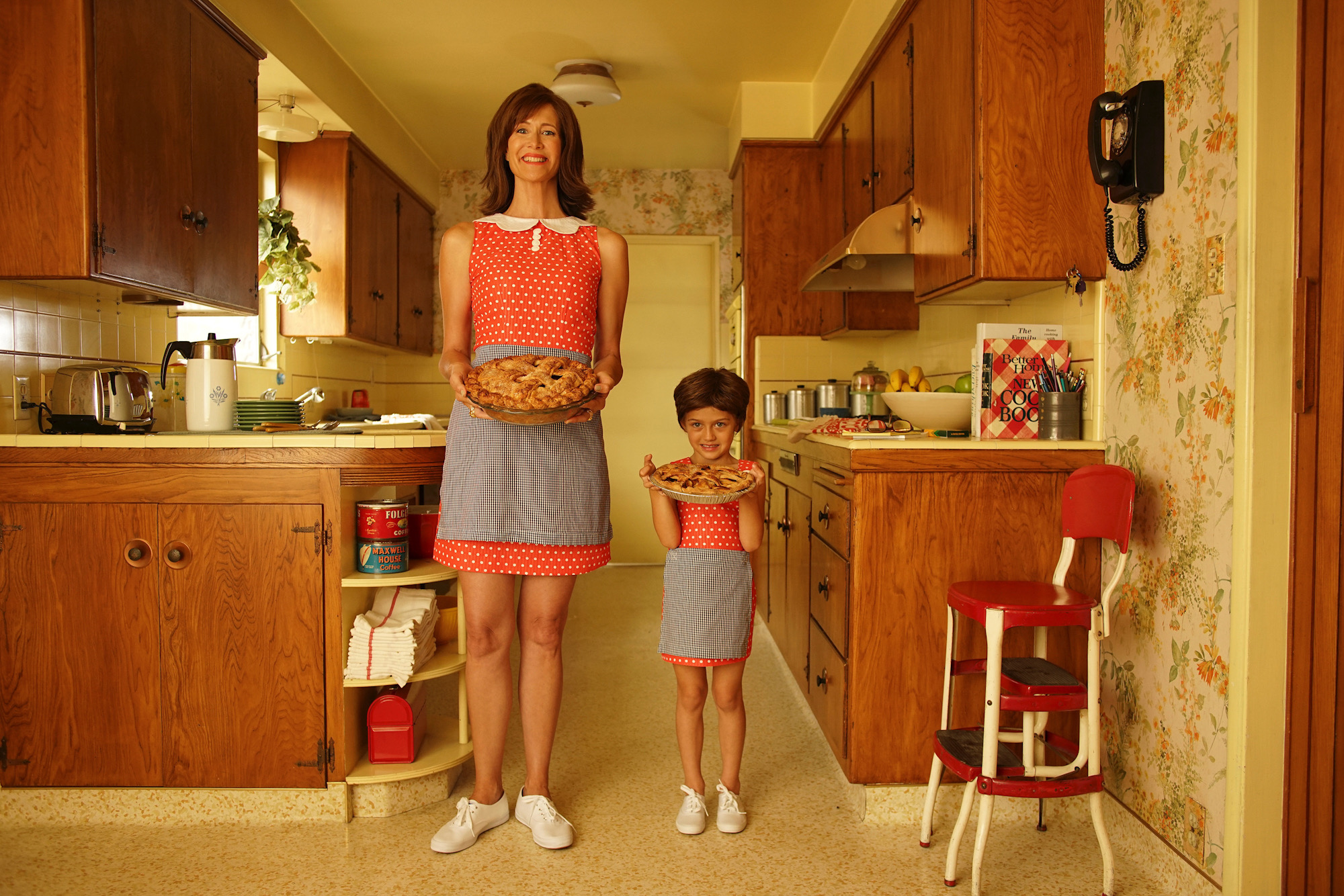Housewarming: ‘Jona Frank: Model Home’ explores what place means
March 4, 2022
 MIRROR, MIRROR, FROM CHERRY HILL, 2020 ARCHIVAL PIGMENT PRINT BY JONA FRANK
MIRROR, MIRROR, FROM CHERRY HILL, 2020 ARCHIVAL PIGMENT PRINT BY JONA FRANKThe Bowdoin College Museum of Art (BCMA) opened its newest exhibit, “Jona Frank: Model Home” by photographer Jona Frank on Thursday, February 24. Running through June 5, this exhibit highlights the artist’s childhood in Cherry Hill, New Jersey, through photography and staged scenes.
This exhibit draws from her 2020 book “Cherry Hill,” which tells the story of her childhood and eventual escape to the University of Southern California through anecdotes and photography.
The book features staged scenes from Frank’s childhood, with various young actors playing the part of her childhood self over the years. The actress Laura Dern represents her mother, Rose, throughout the collection.
When translating these stories to the Model Home exhibit, Frank focused on the repeated image of her childhood home, which stands at the exhibit’s center. Much of her work focuses on the association of her childhood with certain architectural and aesthetic aspects of her home’s physical space.
She specifically focuses on the wallpaper that filled her home. For the book, she designed five different wallpapers, each of which tell the story of a part of her life through drawn scenes. Many times, these scenes are reflected in a physical photograph seen later in the exhibit.
“I wanted to try to convey that feeling of blending in and becoming a part of the wallpaper, but not really being seen as somebody who has their own ideas or their own intentions or desires,” Frank said.
Throughout the exhibit, images are peeking through wallpaper, referring to the theme of permeating stories and memories contained within the walls. There are also direct quotes and phrases from the book printed on the walls, photos and objects throughout the exhibit.
The exhibit itself features multiple forms of media, including a physical setup of a child’s birthday party. There is intentional lighting and object placement to highlight the visible words of “you are not enough” iced onto the cakes, a phrase that runs through the exhibit.
“I’ve always been interested in this intersection of making still photographs and making motion pictures, and even if it was just brief moments of motion, that was always always something that I was fascinated by,” Frank said. “In a lot of ways, I wanted to bring that into more of the fine art world, not just the traditional film world.”
There is also a collection of embroidered pieces in the exhibit’s final room, which Frank made herself. She had never embroidered before the summer of 2021 but decided to create a 50-piece set of images drawn from the book itself with direct quotes and images, often focusing on the repeated line drawing of the model home.The focus on embroidery and baking emphasizes a comparison of the domestic arts to the physical arts depicted in the images. Specifically, Frank believes that the motif of baking pies are emblematic of domesticity.
The story culminates in a side gallery, where Frank’s escape is depicted. On a wood paneled wall is the connected plan for her life after Cherry Hill, and the opposing wall features photographs taken by Frank from the summer following college, when she traveled across the United States photographing.
This wall was curated in part by Cameron Snow ’22 and Andria Polo Brizuela ’22 who interned at the BCMA this summer and fall, respectively. Snow chose the photos that hang on the wall from hundreds of proofs, and Brizuela designed and hung the photos.
“My job was to go photo by photo marking which ones I liked, which ones I didn’t like, keeping a notebook on the side saying: ‘Why did I like these photos?’ ‘What was I seeing?’ ‘What themes; what connections?’ Basically, giving [Frank] a fresh set of eyes to see her work,” Snow said.
The final aspect of the exhibit, the “Invisible Girls,” overlooks Maine Street. These transparent, plastic dolls reference the “Visible Man” anatomy toy Frank’s brother would often play with. Only one of the figures is anatomically realistic, while the remaining figures are filled with telephone lines, cherry blossoms, Lucky Charms and twigs, all of which refer to various childhood stories throughout the exhibit.
The “Invisible Girls” represent the details of life that make up a person’s “inside” or internal stories and how they are perceived externally.
“Our childhood lives within the walls of the house that we grew up in, and we carry the memories and we leave the memories,” Frank said. “But, essentially, we can never go back to it, because you can never go back to childhood.”

Comments
Before submitting a comment, please review our comment policy. Some key points from the policy: